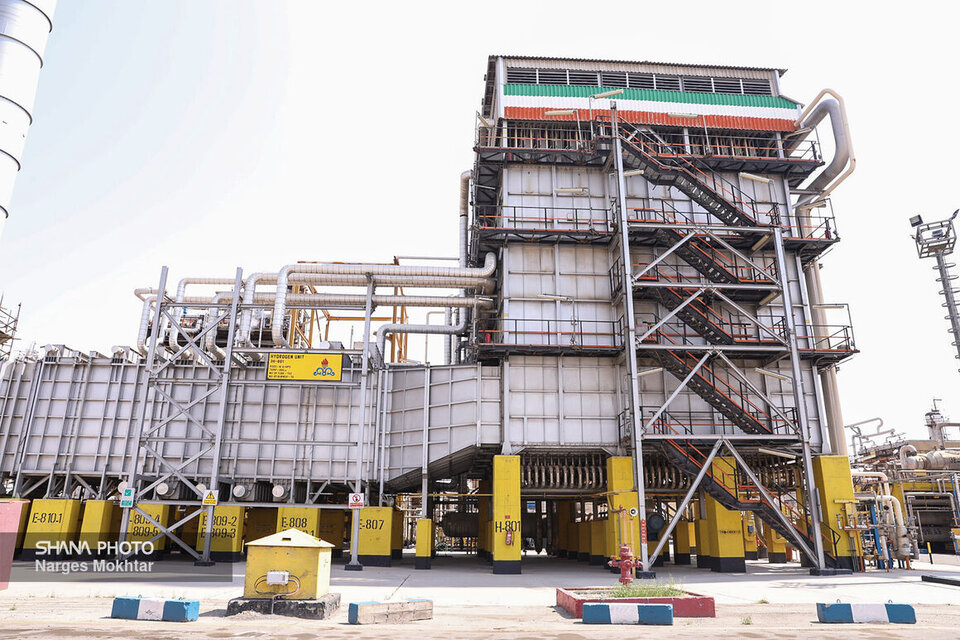Alireza Arman-Moqaddam, speaking on a television program Sunday, discussed Iran’s refining and petroleum distribution industry in light of the current year’s slogan, “Investment for Production.”
He noted that average gasoline consumption in 2025 was about 124 million liters per day, exceeding 130 million liters per day during the Nowruz holidays. On March 19, 2025, consumption hit a record over 160 million liters.
Arman-Moqaddam emphasized that rising consumption must be met with increased production. Since the Islamic Revolution, Iran has built three refineries—Arak, Bandar Abbas, and Persian Gulf Star—which have significantly boosted output. Additionally, quality improvement projects have been implemented to produce Euro-standard gasoline and diesel in most refineries.
Overconsumption: A major challenge for refining industry
The executive deputy cited excessive fuel consumption as a key challenge, stating that public transportation infrastructure is insufficient to reduce reliance on private vehicles. Without intervention, he warned, consumption will continue rising unsustainably.
If this trend continues, Iran could face severe challenges in the near future. Aside from the Makran Petrorefinery, most petrorefinery projects have seen minimal progress (2-3%). Arman-Moqaddam estimated that a 300,000-barrel petrorefinery requires $8–12 billion in investment, which is difficult under current economic conditions.
South Adish Refinery to launch by Sept.
The Makran Petrorefinery is only 10% complete, with construction on main units yet to begin. Meanwhile, the South Adish refinery, now 90% complete, is expected to become operational this year, adding 60,000 barrels per day to refining capacity. While it won’t produce gasoline, it will yield 2.5–3 million liters of diesel daily.
Arman-Moqaddam said Iran’s refining capacity will grow by over 180,000 barrels per day in 1404:
- South Adish (60,000 bpd) – First half of 2025
- Mehr Persian Gulf (120,000 bpd of gas condensates) – Expected by year-end
Other ongoing projects include quality improvement plans, a CCR unit, and wastewater treatment at Tehran Refinery.
Smart fuel card overhaul & bank card integration
To manage fuel quotas more effectively, authorities plan to redesign the smart fuel card system and integrate bank cards for tracking. This aims to reduce smuggling by monitoring gasoline distribution more closely.
Arman-Moqaddam also highlighted diversifying the fuel mix as a key strategy. While CNG usage previously exceeded 23 million cubic meters per day, it fell to 19 million. Efforts are underway to revive CNG’s role through dual-fuel vehicle projects, easing pressure on gasoline demand.
Financing challenges for refining projects
Shahla Louni, NIORDC’s investment manager, said mega-projects face funding hurdles. Under the 7th Development Plan, priority is given to projects with lower capital needs and significant progress, such as Pioneers of Siraf, Javid Energy, and Mehr Persian Gulf.
For financing, the plan relies on:
30% from capital markets
5% from shareholders
Remainder from refinancing other projects
Louni cited the Abadan Refinery expansion—funded through foreign financing—as a success. For Phase 2, they plan to use revenue from Abadan’s product sales due to sanctions constraints.
The Khuzestan refinery, requiring $3.2 billion, has provisions in the 1404 budget and 7th Development Plan, with ongoing talks with foreign firms.


Your Comment